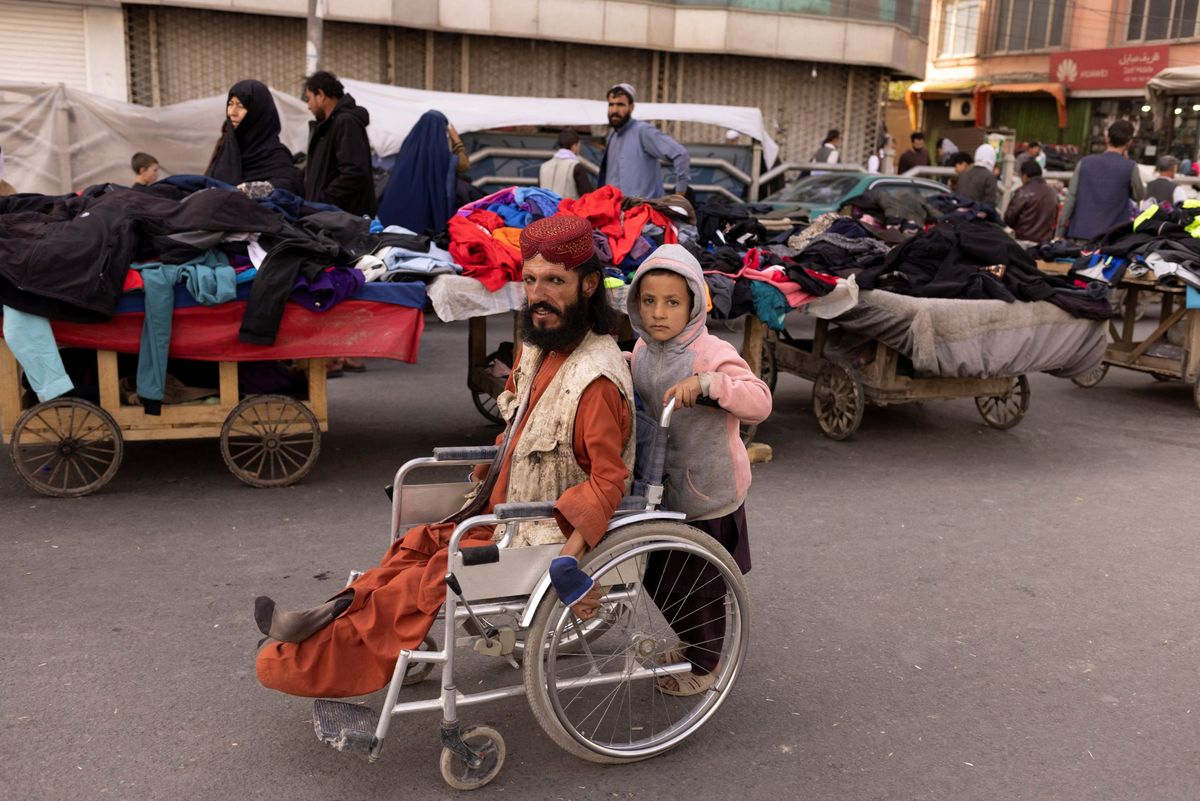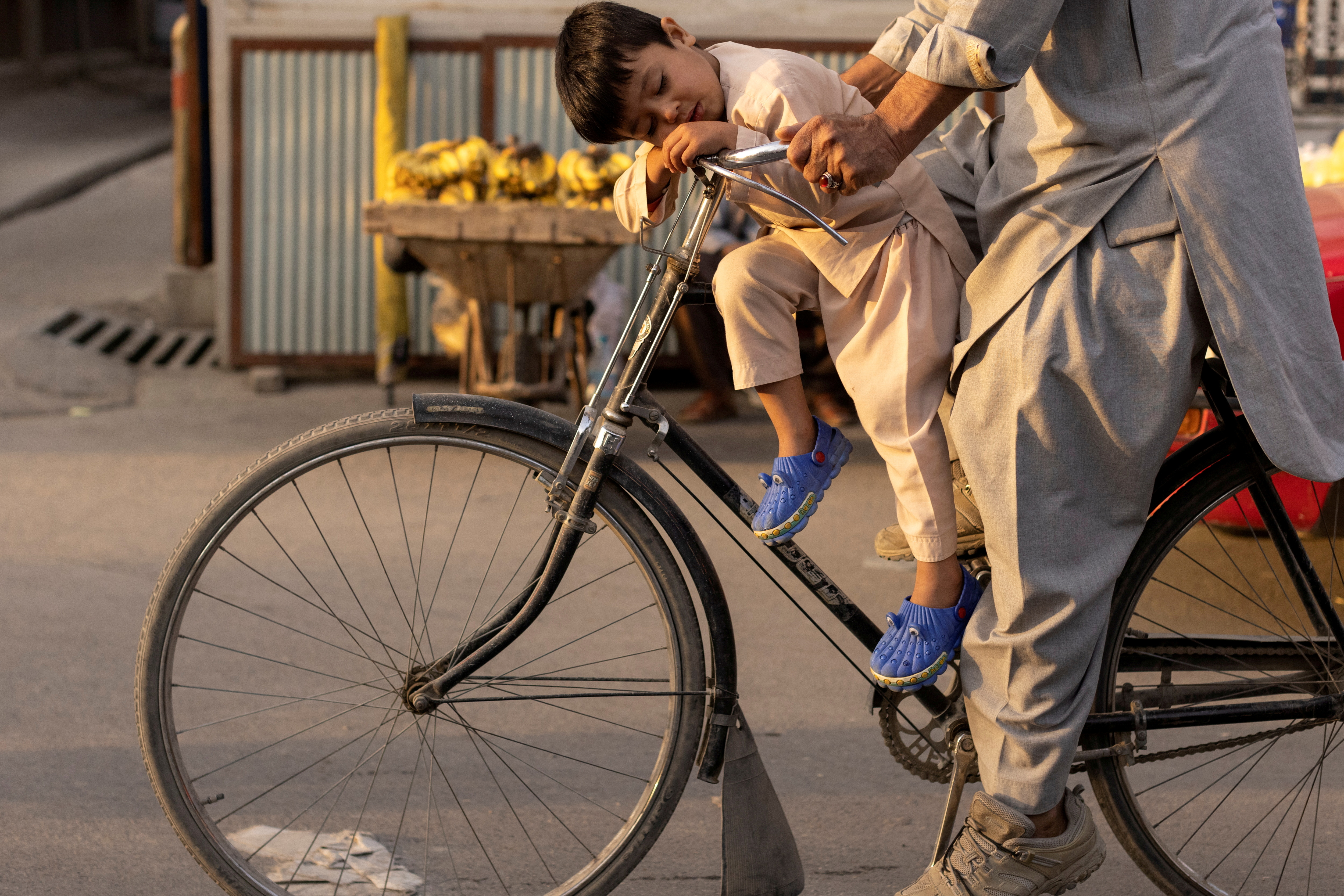What’s going on in Afghanistan now?

A few minutes every morning is all you need.
Stay up to date on the world's Headlines and Human Stories. It's fun, it's factual, it's fluff-free.
“No one will starve cause there is no famine and the cities are full of food," said Taliban spokesperson Zabiullah Mujahid. He also added that any claims of a “crisis” were fake.
What happened with the US pullout?
- In August, United States President Joe Biden led the withdrawal of American troops from Afghanistan. And by the end of that month, the US had evacuated all American troops.
- “Our mission in Afghanistan was never supposed to have been nation-building. It was never supposed to be creating a unified, centralized Democracy,” said Biden in August last year. “Our only vital national security interest in Afghanistan remains today what it has always been: preventing a terrorist attack on American homeland.”
- The withdrawal was chaotic, with the Afghan government collapsing, President Ashraf Ghani fleeing, and the Taliban essentially considering itself the nation’s government just waiting for the US to leave.
- When the US did leave, the Taliban took over the capital city, Kabul, and most of the country almost immediately.
Why was it chaos?
- The Taliban takeover was a blow to almost all humanitarian efforts in the country.
- The Taliban follows a form of Sharia law. In Arabic, Sharia means “the clear, well-trodden path to water." It can guide every part of a Muslim’s life, including family, finance and business.
- In practice, though, the law, among other things, prevents women and girls from going to school, having a job outside of the home or appearing in movies or TV.
- For many critics of the pullout from Afghanistan, this is the reason for their criticism. Democrats have widely argued that the pullout has done significant damage to human rights in the region.
- More conservative critics of the pullout have argued that the American presence in Afghanistan was meant to “keep the lid on” the situation, preventing a haven for terrorism from developing.
What’s going on now?
- Once the American military pulled out and the Taliban took over, most of the international aid provided to the country stopped flowing. The nation was dependent on this aid during the two decades of war.
- This is mainly because of sanctions imposed on the Taliban, which meant that the Taliban government is essentially isolated in the global economy.
- As a result, billions in foreign aid, which accounted for 40% of the country’s gross domestic product (GDP), disappeared almost immediately after the takeover. That means money not going into healthcare, propping up farmers or helping local workers in the country.
- On top of that, Afghanistan is also facing a drought this year – the worst one in decades. This drought will hit 25 of the country’s 34 provinces, and it’s estimated that crop output will be down around 20% from the year before.
- “Every farmer we’ve spoken to has lost almost all of their crops this year, many were forced to sell their livestock, they have accumulated enormous debts and simply have no money," said Richard Trenchard, the Food and Agriculture Organization Representative in Afghanistan in November last year.
- So now, in the middle of winter, millions of Afghans are experiencing food shortages amid an economic crash with billions less in humanitarian funding.
How bad is the hunger crisis?

- According to a United Nations (UN) report, somewhere around 23 million Afghans will face severe food insecurity through March. An estimated one million children under five could die from starvation.
- Additionally, most of the provinces in the country are listed under the “emergency” food classification, with the only level higher being “famine.”
- In a typical year, farmers kept wheat from their harvest and made money by selling onions to others. But in a drought year, those wheat stores barely made it through the fall, much less the winter.
What has the Taliban said?
- In a statement to CNN in late December of last year, the ruling Taliban noted the country’s “economic problems," but denied there was a crisis of any sort.
- “No one will starve cause there is no famine and the cities are full of food," said Taliban spokesperson Zabiullah Mujahid. He also added that any claims of a “crisis” were fake.
- Most of Afghanistan’s central bank reserves of about US$10 billion is held in the US and have been frozen since mid-August.
- Also, because the Taliban took control of the country’s banking sector, private banks collapsed, and owners left the country. As a result, Afghans at home and abroad cannot access their personal bank accounts.
- This has led to a severe cash crisis, with the nation’s currency almost halving since the Taliban took control.
What’s the world doing about it?
- Well, most of the weight is on the US since American sanctions keep NGOs and agencies from providing aid to Afghanistan.
- But the Treasury Department announced in December that it would be issuing “general licenses” to non-governmental organizations (NGOs), international aid groups and some branches of the US government to provide aid to the people of Afghanistan.
- But lifting sanctions of any kind comes with risks, which inevitably brings some criticism to the US government; one considerable risk of lifting sanctions is that the money could go to the wrong places, namely terrorist activities.
- To deal with this issue, these licenses are being given out with the caveat that they can only be used for certain things, like providing basic human needs or helping to repair and develop civil society.
- The other big risk is that by allowing the Taliban any access to the global economic system, the US is legitimizing the Taliban and its regime. This line is one that Biden, his administration and other countries will have to walk carefully.
- This decision to issue licenses to NGOs comes after the UN Security Council passed a resolution that exempts humanitarian activities in Afghanistan from international sanctions for a year, with Wally Adeyemo, the deputy Treasury secretary, saying in a statement, “We are committed to supporting the people of Afghanistan.”
What’s next?
- Well, first off, it’s unlikely this aid will solve all of the nation’s problems. After all, there are some problems Afghanistan is facing – like drought or the coronavirus – that are just out of people’s control.
- But, for now, the focus seems to be more on getting people through the winter months until longer-term solutions can be met globally.
- With that, in December, 31 donors, including the US, agreed to transfer US$280 million from the Afghanistan Reconstruction Trust Fund (ARTF) to the World Food Program (WFP) and UNICEF to help the humanitarian crisis in the country.
- By redirecting the trust fund money to these two branches of the UN, it gets funding into the country in a way that doesn’t compromise the US sanctions against the Taliban.
- “The Afghanistan Reconstruction Trust Fund (ARTF) donors today decided to transfer out $280 million in ARTF funds by the end of December 2021 to UNICEF and the World Food Program (WFP). This decision is the first step to repurpose funds in the ARTF portfolio to provide humanitarian assistance to the people of Afghanistan at this critical time,” the World Bank shared in a statement.
- It added that the organizations have the capability in the country to “use these funds to cover financing gaps in their existing programs to deliver health and nutrition services directly to the Afghan people ….”
You drive the stories at TMS. DM us which headline you want us to explain, or email us.




Comments ()